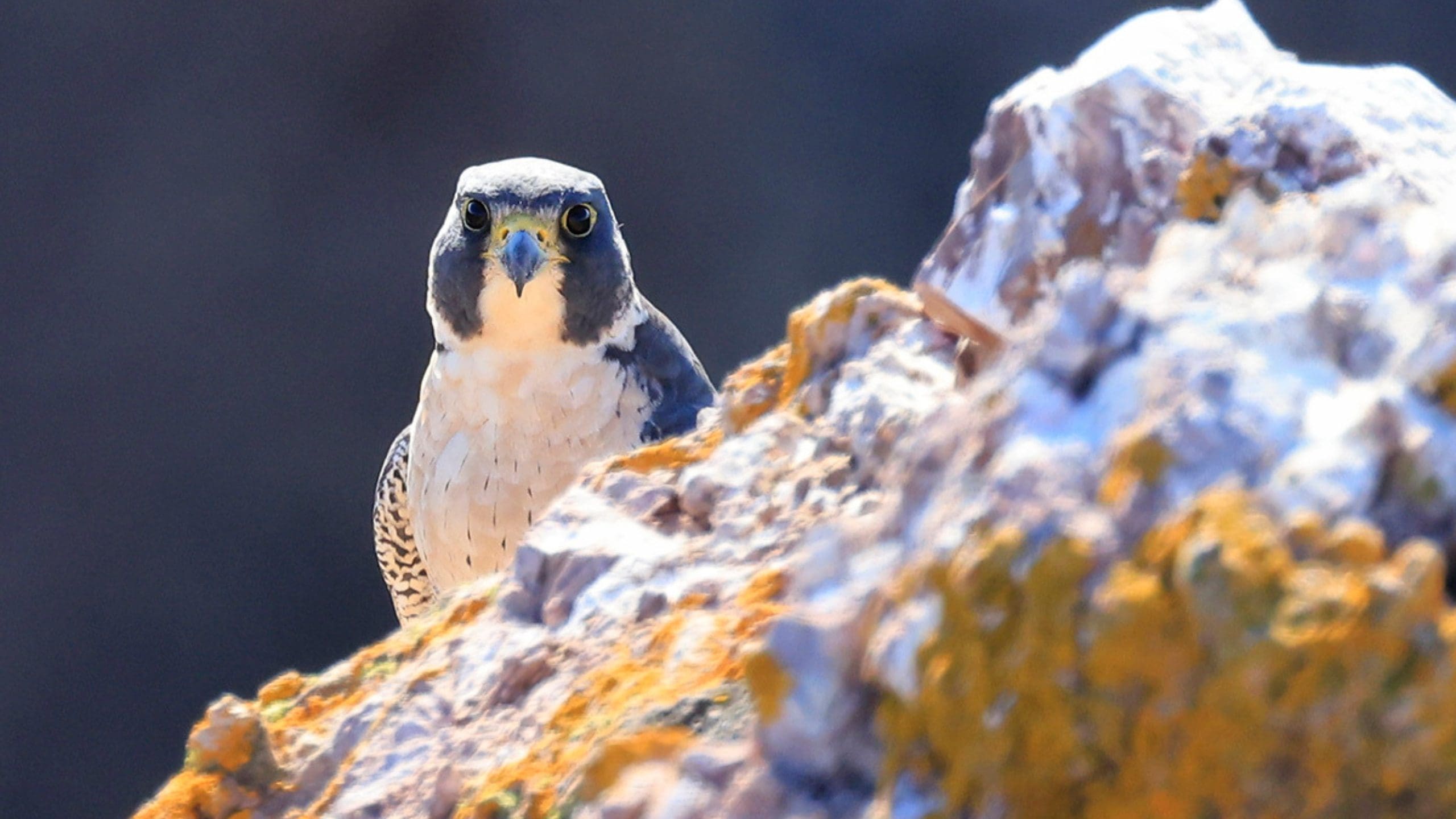Posted: May 14, 2023
Our Wildlife of the Week – 2023 Week 20…
Meet the “Peregrine Falcon”!
(Falco peregrinus)
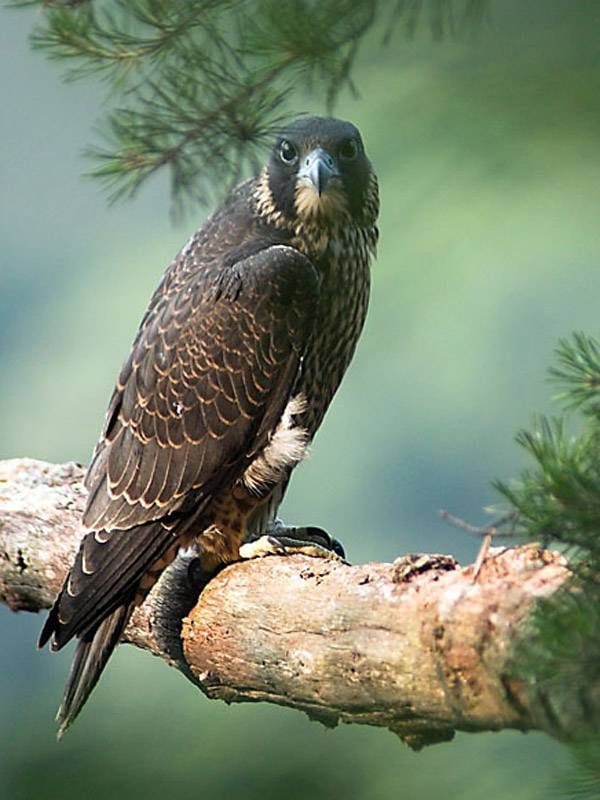
Table of Contents
Peregrine Falcon Physical Description
There are 19 regional variants (subspecies) of Peregrine Falcon worldwide. They vary considerably in size and color. Like all falcons, Peregrine Falcons have long, tapered wings and a slim, short tail. In North America they are roughly crow sized, ranging in length from between 14 to 19 inches (36 to 49 cm) in males and 18 to 23 inches (45 to 58 cm) in females. Wingspan varies from 36 to 44 inches (91 to 112 cm). They weigh an average of 2 lbs (907 g).1
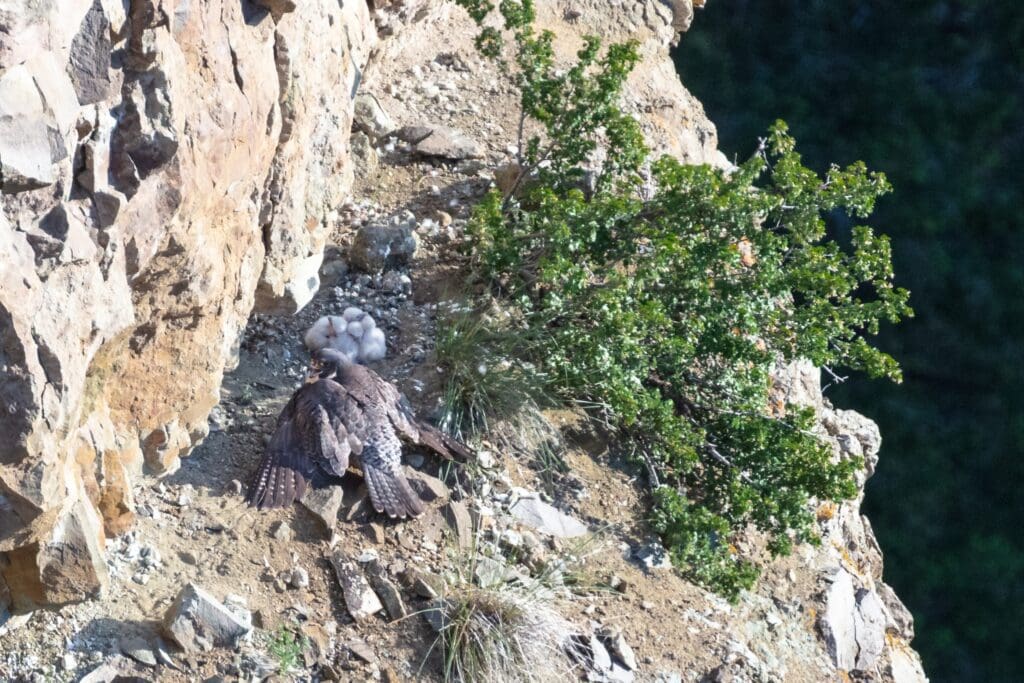
Like most birds of prey, the females are slightly larger than males. They are typically 15-20% larger and 40-50% heavier than males. Peregrine Falcons have slate and blue-gray wings, black bars on their backs and pale underbellies. They have white faces with a black stripe on each cheek and large, dark eyes. Young birds tend to be darker and browner, with streaked, rather than barred, underparts. Plumage doesn’t vary seasonally.1
SPONSORED ADVERTISEMENT
Peregrine Falcon In Action
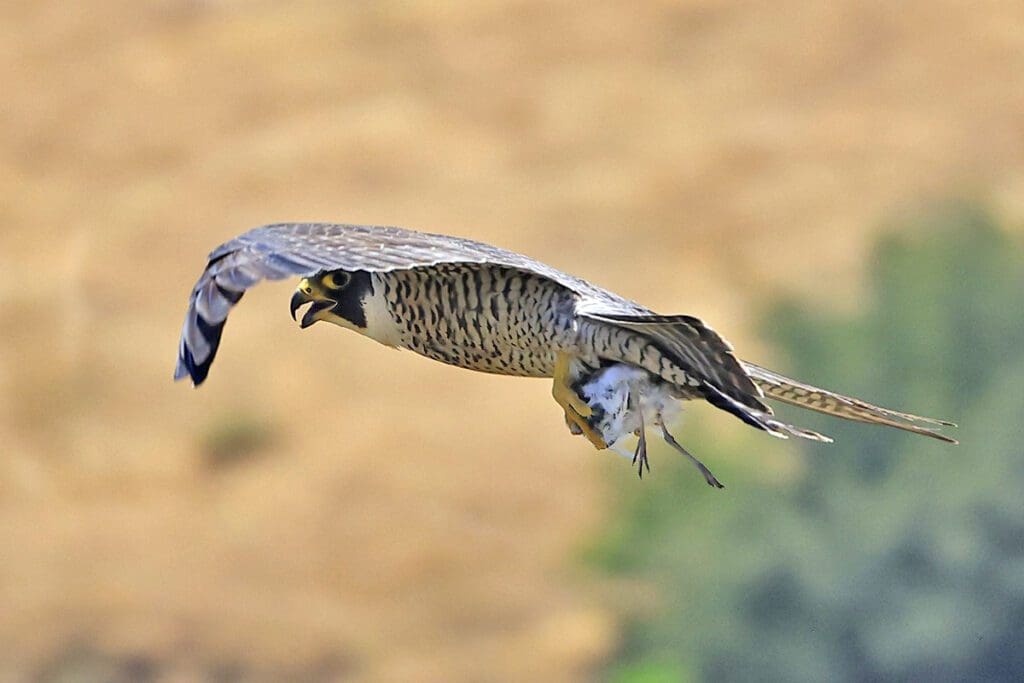
Peregrine Falcons are one of nature’s swiftest and most beautiful birds of prey. Its name comes from the Latin word peregrinus, meaning “foreigner” or “traveler.” This impressive bird has long been noted for its speed, grace, and aerial skills. Now, it is also a symbol of America’s recovering threatened and endangered species.3
Peregrine Falcons are active during the day. When not breeding they are primarily solitary and establish and defend territories. Territory sizes vary with the density of food resources. In northern populations, with the highest population densities, the distance between nests averaged between 2.1 to 3.5 miles (3.3 to 5.6 km) in different areas.1
Peregrine Falcons feed primarily on other birds, such as songbirds, shorebirds, ducks, and-in urban areas-starlings and pigeons. Flying high above their intended prey, peregrines will ‘stoop’ or dive and strike in mid-air, killing the prey with a sharp blow. Scientists estimate the speed of a diving peregrine to be more than 200 miles per hour.3
SPONSORED ADVERTISEMENT
Where to Spot Peregrine Falcon
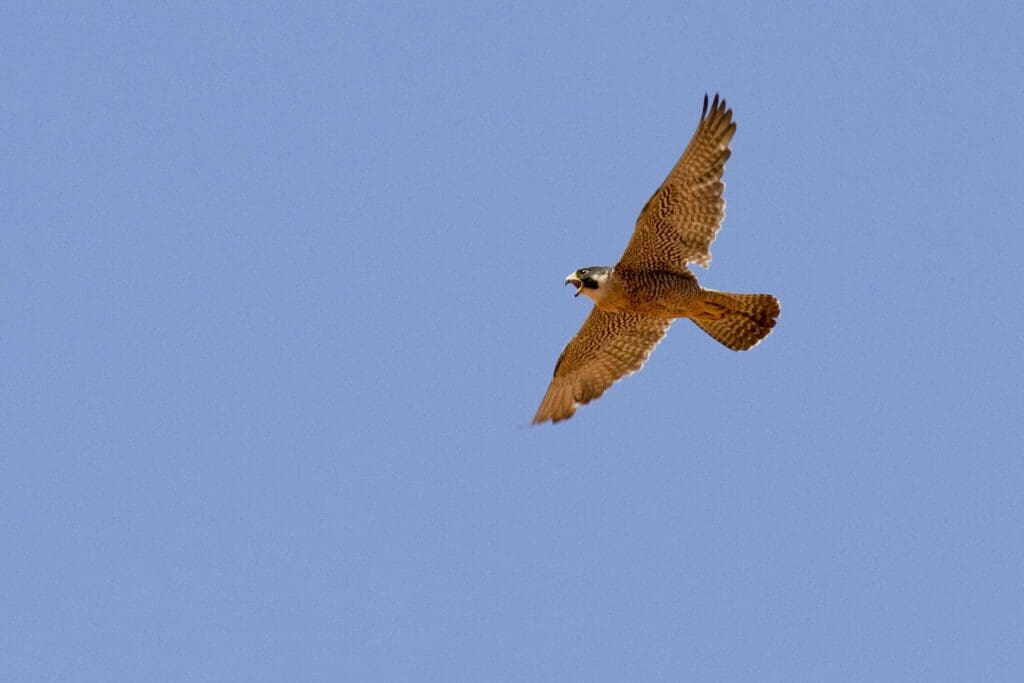
Peregrine Falcons prefer open habitats, such as grasslands, tundra, and meadows. They are most common in tundra and coastal areas and rare in sub-tropical and tropical habitats. They nest on cliff faces and crevices. They have recently begun to colonize urban areas because tall buildings are suitable for nesting in this species, and because of the abundance of pigeons as prey items. They have been observed breeding as high as 11,800 feet (3600 meters) elevation in the Rocky Mountains of North America.1
Peregrine Falcons are found worldwide, except for rainforests and cold, dry Arctic regions. They are one of the most widespread terrestrial vertebrate species in the world. Most Peregrine Falcons migrate long distances between breeding and winter ranges. Northernmost populations breed in the tundra of Alaska and Canada, and migrate to central Argentina and Chile. They typically migrate along sea coasts, long lake shores, barrier islands, mountain ranges, or at sea.1
The Peregrine Falcon can be found in over 58 National Parks and many other National Park Service sites.2 Including:
- Acadia National Park
- Arches National Park
- Badlands National Park
- Big Bend National Park
- Biscayne National Park
- Black Canyon of the Gunnison National Park
- Bryce Canyon National Park
- Canyonlands National Park
- Capitol Reef National Park
- Carlsbad Caverns National Park
- Channel Islands National Park
- Congaree National Park
- Crater Lake National Park
- Cuyahoga Valley National Park
- Death Valley National Park
- Denali National Park & Preserve
- Dry Tortugas National Park
- Everglades National Park
- Gates Of The Arctic National Park & Preserve
- Glacier Bay National Park & Preserve
- Glacier National Park
- Grand Canyon National Park
- Grand Teton National Park
- Great Basin National Park
- Great Sand Dunes National Park and Preserve
- Great Smoky Mountains National Park
- Guadalupe Mountains National Park
- Haleakalā National Park
- Hawai’i Volcanoes National Park
- Indiana Dunes National Park
- Isle Royale National Park
- Joshua Tree National Park
- Katmai National Park & Preserve
- Kenai Fjords National Park
- Kobuk Valley National Park
- Lake Clark National Park & Preserve
- Lassen Volcanic National Park
- Mammoth Cave National Park
- Mesa Verde National Park
- Mount Rainier National Park
- New River Gorge National Park & Preserve
- North Cascades National Park
- Olympic National Park
- Petrified Forest National Park
- Pinnacles National Park
- Redwood National and State Parks
- Rocky Mountain National Park
- Saguaro National Park
- Sequoia & Kings Canyon National Parks
- Shenandoah National Park
- Theodore Roosevelt National Park
- Virgin Islands National Park
- Voyageurs National Park
- Wind Cave National Park
- Wrangell – St Elias National Park & Preserve
- Yellowstone National Park
- Yosemite National Park
- Zion National Park
SPONSORED ADVERTISEMENT
Peregrine Falcon Conservation Status
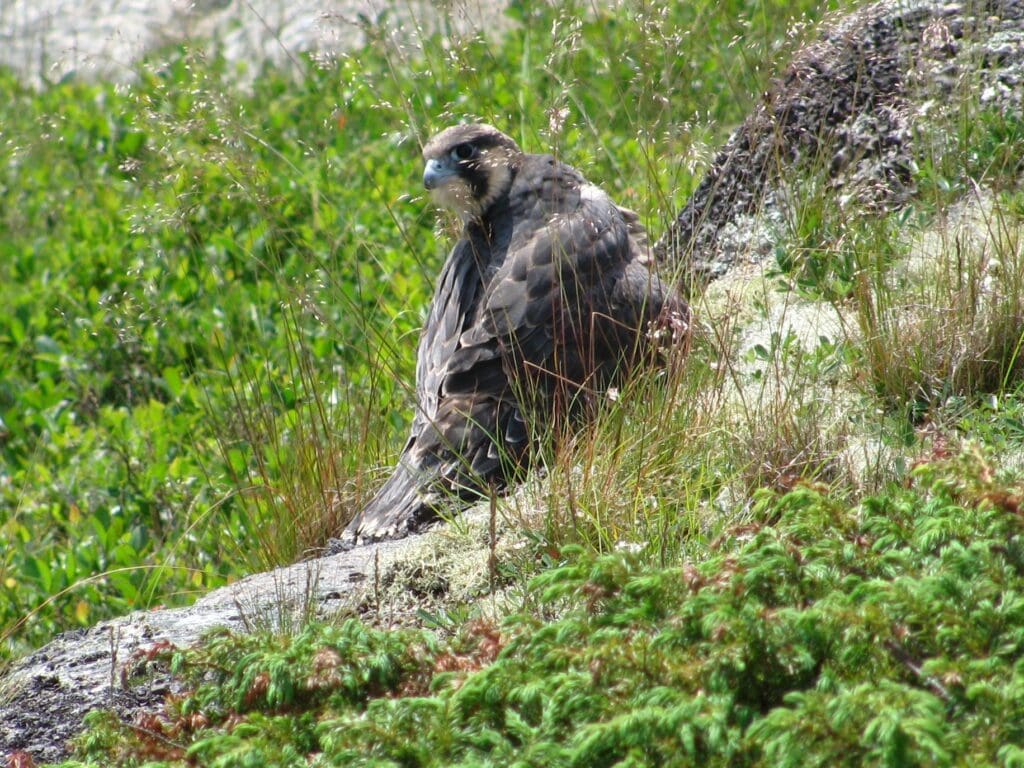
Peregrine Falcons have suffered due to their dangerous position atop the food chain. Pesticides accumulate in small (not lethal) quantities in the tissues of small birds and mammals, but become concentrated enough in predatory birds, such as falcons, to kill them or render them incapable of producing offspring. Organochlorine pesticides (DDT and dieldrin) have been proven to reduce the birds’ ability to produce eggshells with sufficient calcium content, making the egg shells thin and more likely to break.1
Peregrine Falcon populations dropped precipitously in the middle of the 20th century. All breeding pairs vanished in the eastern United States. A successful captive breeding and reintroduction program, combined with restrictions in pesticide use, has been the basis of an amazing recovery by Peregrine Falcons. Now the use of many of the chemicals most harmful to these birds is restricted. However, it is not yet restricted in Central and South American where many subspecies spend the winter.1
After having been on the endangered species list since 1969, the incredible recovery of Peregrine Falcons has become a perfect example of how effective human conservation can be. In the 1990s they were taken off the federal list of endangered species in the United States. They are still listed as endangered in the state of Michigan.1
Peregrine Falcon and You
Have you seen a Peregrine Falcon in it’s natural environment? Tell us about it in the comments below!
Do you have a picture of these amazing creatures? Share it on social media with us and tag us in your post.
Use the hashtag:
#WildlifeOfTheWeek.
Interested in Wildlife Photography???
Check out this amazing beginners guide from National Geographic:
National Geographic Photo Basics The Ultimate Beginner’s Guide to Great Photography
The above links are provided in this article as affiliate links. Meaning, at no additional cost to you, we’ll earn a commission if you click one and make a purchase. An easy way to help support us if you’re going to buy anyway!
Learn more about all the amazing wildlife in our National Parks and how to safely “Watch Wildlife” on this amazing page with lots of resources from the National Park Service!
Want tips for photographing wildlife? Check out this great article for tips from the National Park Service.
Help support Discover Our Parks by becoming a Patron for as little as $1 a month! Your support will help us continue to provide articles like this and add even more information about our parks to this site.
If you want to make a one-time donation, buy us a coffee!
‘We got some of the above information from the following:
1: Animal Diversity Web – Falco peregrinus – Peregrine Falcon
2: NPSpecies – Find Parks Where a Species is Found
3: NPS – Peregrine Falcon
Check out these recent posts from Discover Our Parks:
- The Isolated Black-bellied Salamander: Wildlife of the Week – 2023 Week 22
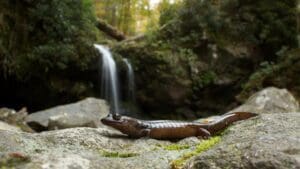
- The Splendid Sandhill Crane: Wildlife of the Week – 2023 Week 21
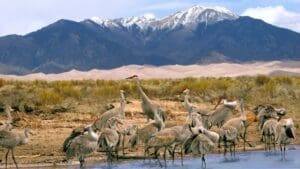
- The Promising Peregrine Falcon: Wildlife of the Week – 2023 Week 20
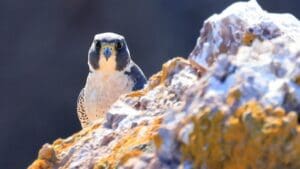
- The Intimidating Killer Whale: Wildlife of the Week – 2023 Week 19
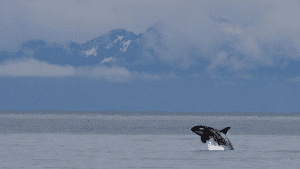
- The Swift Fox: Wildlife of the Week – 2023 Week 18
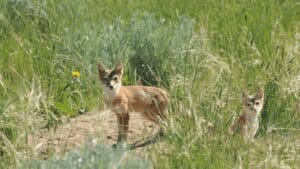
SPONSORED ADVERTISEMENT

